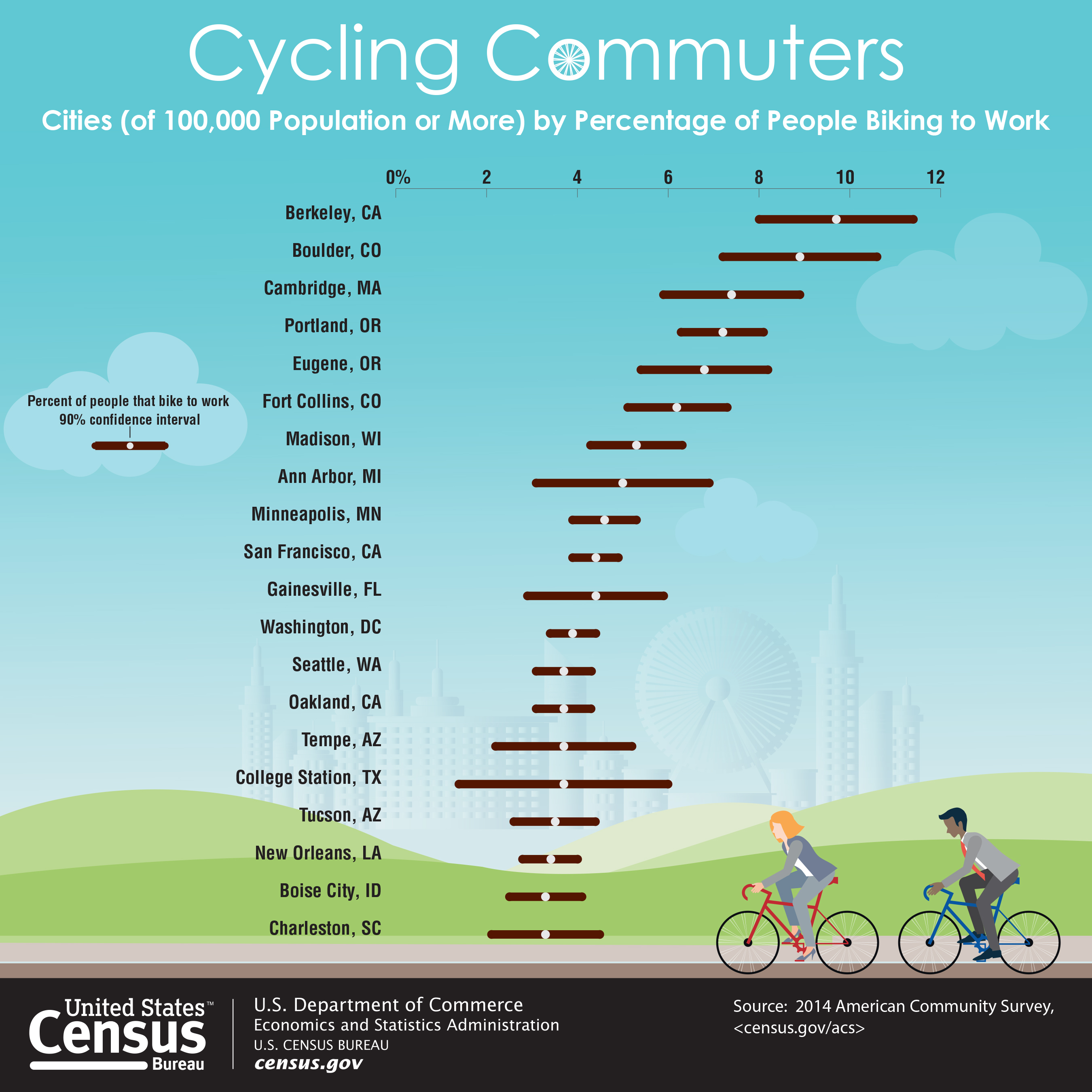
US Census: Percentage of people commuting to work by bike, for US cities with population greater than 100,000 persons. Credit: US Census Bureau.
More information (and high resolution image) at https://www.census.gov/newsroom/press-releases/2016/cb16-tps96.html